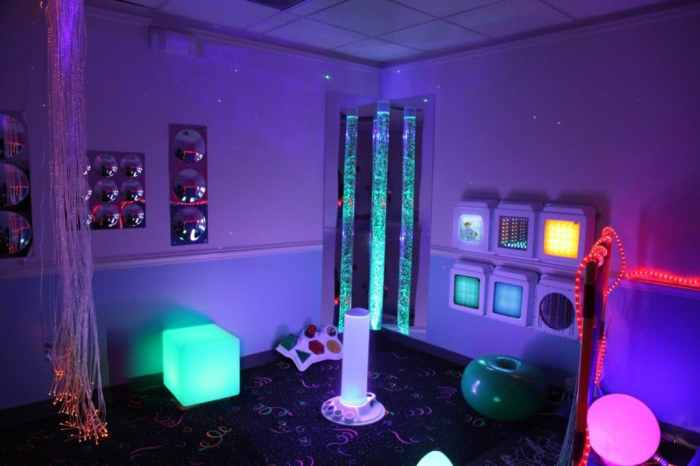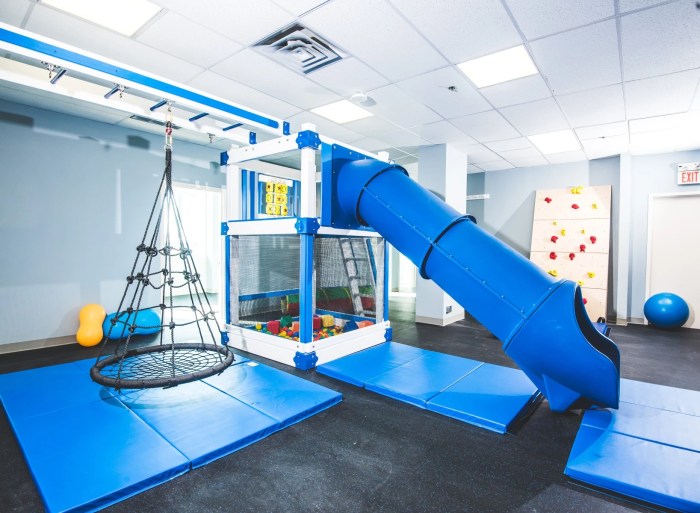As teenagers navigate the complexities of adolescence, their bedrooms serve as sanctuaries where they can unwind, recharge, and express their individuality. Creating a sensory-friendly environment in these spaces is crucial for fostering their well-being, reducing stress, and promoting restful sleep.
This guide will delve into the key elements of sensory-friendly design, empowering parents and teens to transform their bedrooms into calming and supportive havens.
Sensory processing refers to the way our brains interpret and respond to sensory input from our surroundings. For some teenagers, certain sensory stimuli can be overwhelming or distracting, leading to anxiety, irritability, and difficulty concentrating. By carefully considering lighting, colors, scents, sounds, and textures, we can create environments that minimize sensory overload and promote a sense of peace and relaxation.
Sensory-Friendly Lighting
Creating a sensory-friendly environment in teen bedrooms is essential for their well-being. Lighting plays a crucial role in shaping the mood and atmosphere of a space. Natural lighting is highly beneficial, as it boosts serotonin levels, improving mood and cognitive function.
Incorporating dimmable lights and color-changing bulbs allows for customization and the creation of a calming ambiance.
Dimmable Lights
Dimmable lights provide flexibility and control over the brightness of the room. They can be adjusted to create a soft, soothing glow or a brighter setting for tasks. Dimmable LED lights are energy-efficient and offer a wide range of color temperatures, allowing for the creation of different moods.
Color-Changing Bulbs
Color-changing bulbs emit light in various hues, from warm and inviting to cool and refreshing. Blue and green tones promote relaxation, while amber and red tones create a cozy and warm atmosphere. These bulbs can be used to create dynamic lighting schemes that enhance the sensory experience.
Specific Lighting Fixtures and Color Schemes
Consider using wall-mounted sconces or floor lamps to provide indirect lighting, which is less harsh and more calming. Choose light fixtures with soft, rounded edges and avoid harsh angles or sharp edges. Warm, neutral color schemes such as beige, cream, or light gray create a sense of serenity and tranquility.
Calming Colors and Textures
The visual environment of a bedroom can significantly influence a teen’s mood and behavior. By incorporating specific colors and textures, it is possible to create a sensory-friendly space that promotes relaxation and reduces anxiety.
Color psychology has established that different colors evoke distinct psychological responses. For instance, warm colors like red, orange, and yellow are known to stimulate and energize, while cool colors like blue, green, and purple tend to have a calming effect.
Color Palettes for Relaxation
When designing a calming bedroom for a teen, it is advisable to choose a color palette that incorporates soothing hues. Pastel shades of blue, such as sky blue and lavender, have been found to promote relaxation and tranquility. Soft greens, like sage and olive, are also known for their calming effects.
Neutral colors like white, cream, and beige provide a serene backdrop that can be complemented with accents of calming colors.
Soft and Plush Textures
In addition to color, texture plays a crucial role in creating a cozy and inviting space. Soft and plush fabrics, such as velvet, fleece, and faux fur, can provide a tactile experience that is soothing and comforting. These fabrics can be incorporated into bedding, throw pillows, and curtains to create a warm and inviting atmosphere.
Calming Scents and Sounds
Creating a calming and sensory-friendly environment in teen bedrooms extends beyond visual elements. Incorporating calming scents and sounds can further enhance relaxation and create a soothing atmosphere.
Aromatherapy
Aromatherapy involves using essential oils to promote relaxation and well-being. Essential oils derived from plants like lavender, chamomile, and bergamot have calming effects. Diffusing these oils into the air using a scent diffuser can create a tranquil ambiance.
Soundscapes
Creating a calming soundscape can also contribute to a sensory-friendly environment. White noise machines, nature sounds, or soothing music can mask distracting noises and promote relaxation. These sounds can be played through speakers or headphones.
Recommended Devices
Here are some specific scent diffusers and sound machines that are suitable for sensory-friendly bedrooms:
-*Scent Diffusers
Vitruvi Stone Diffuser
Saje Aroma Om Diffuser
- InnoGear Essential Oil Diffuser
-*Sound Machines
Hatch Restore Sound Machine
LectroFan White Noise Machine
Marpac Dohm Classic White Noise Machine
Tactile Stimulation and Weighted Blankets
Tactile stimulation plays a vital role in regulating emotions and promoting relaxation. For teenagers with sensory sensitivities, providing opportunities for tactile stimulation can help reduce anxiety and improve sleep quality.
Weighted blankets are a popular sensory tool that provides deep pressure stimulation. This type of stimulation can help calm the nervous system and promote a sense of security. Weighted blankets are available in various weights, allowing teenagers to choose the one that provides the most calming effect.
Sensory Toys
In addition to weighted blankets, there are other sensory toys that can provide tactile stimulation. These toys can include:
- Fidget toys: Small, handheld objects that can be squeezed, twisted, or manipulated to provide tactile stimulation.
- Stress balls: Soft, squeezable balls that can help relieve tension and promote relaxation.
- Weighted lap pads: Small, weighted pads that can be placed on the lap or shoulders to provide a calming effect.
By incorporating tactile stimulation into their bedrooms, teenagers can create a more calming and supportive environment that promotes their overall well-being.
Organization and Decluttering
Creating a sensory-friendly environment in a teen’s bedroom involves organization and decluttering to minimize distractions and promote a calming atmosphere.
Decluttering involves removing unnecessary items, while organization involves creating designated storage spaces for belongings. This helps reduce visual clutter, making the space feel more spacious and less overwhelming.
Decluttering Strategies
- Encourage your teen to sort items into piles: keep, donate, discard.
- Start with small areas, such as a desk or dresser, to avoid feeling overwhelmed.
- Set realistic goals and break down the task into smaller chunks.
Storage Solutions
- Consider using clear bins or containers to store items, making it easy to identify contents.
- Utilize vertical storage options, such as shelves or stackable drawers, to maximize space.
- Incorporate baskets or hampers for bulky items, such as blankets or stuffed animals.
Visual Aids and Calming Images
Visual aids can significantly impact a sensory-friendly bedroom, evoking emotions and creating a relaxing atmosphere. Calming images, artwork, and nature photography can transform a space into a tranquil haven.When selecting images and artwork, consider their calming effect and ability to promote a sense of peace.
Choose soft colors, gentle curves, and natural elements that evoke a sense of serenity. Avoid overwhelming patterns, bright colors, or images that may be overstimulating.
Calming Images
- Soft, pastel landscapes with rolling hills and tranquil skies
- Serene water scenes, such as gently flowing streams or shimmering lakes
- Nature photography of lush forests, blooming flowers, or serene wildlife
- Abstract art with calming hues and organic shapes
- Photographs of loved ones or cherished memories that evoke positive emotions
Artwork
- Paintings or prints featuring soothing colors and calming scenes
- Wall tapestries with soft textures and intricate designs
- Framed quotes or affirmations that promote relaxation and well-being
- Photographs of calming landscapes or nature scenes
- Handmade crafts or artwork that evoke a sense of comfort and security
Final Thoughts
Creating a sensory-friendly environment in teen bedrooms is a multifaceted endeavor that requires careful attention to detail and an understanding of individual needs. By implementing the strategies Artikeld in this guide, parents and teens can work together to transform these spaces into havens of tranquility and support.
Remember, the goal is to create a space where teens feel comfortable, relaxed, and empowered to thrive.



